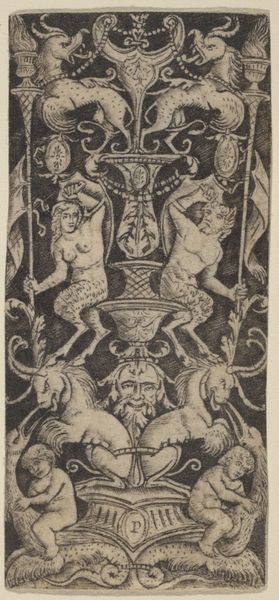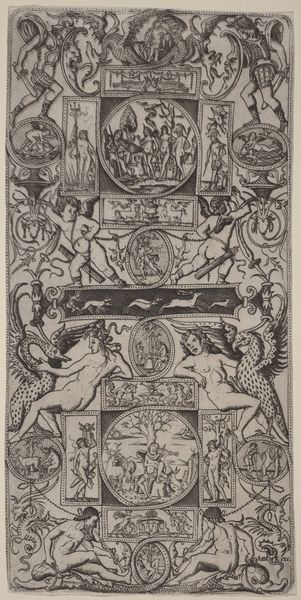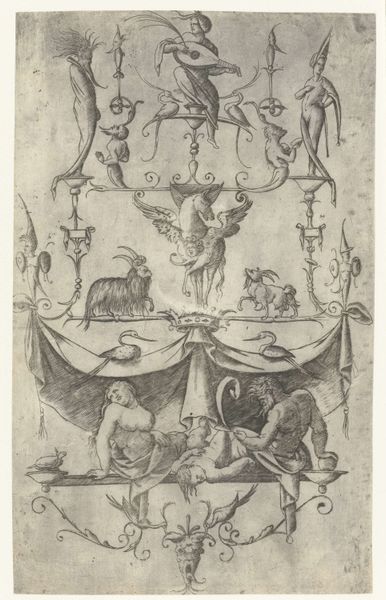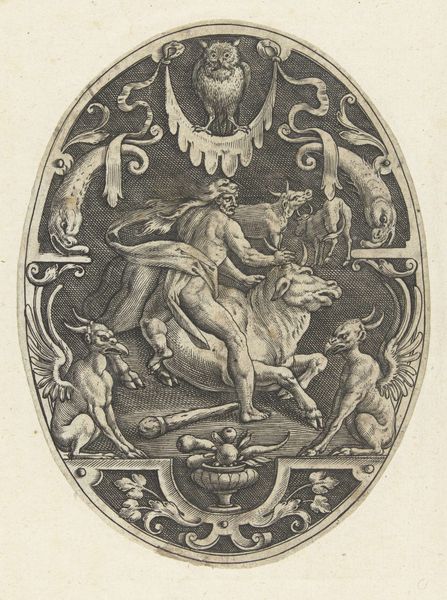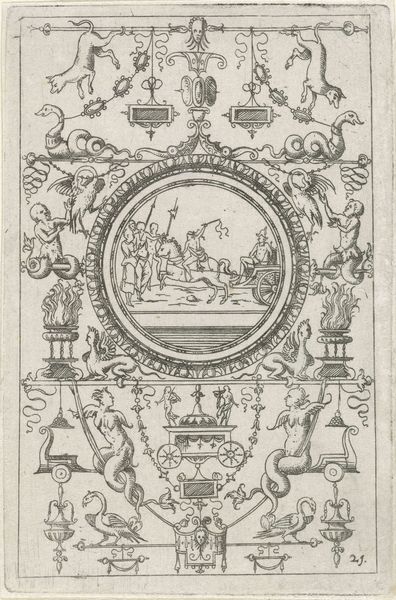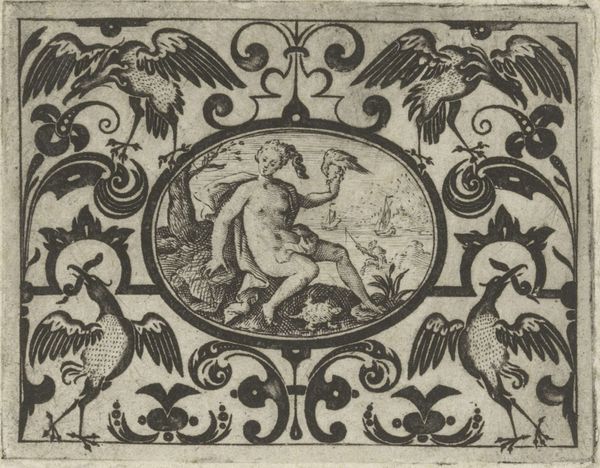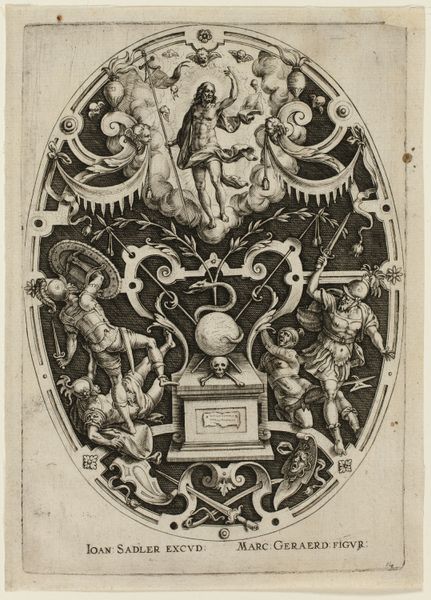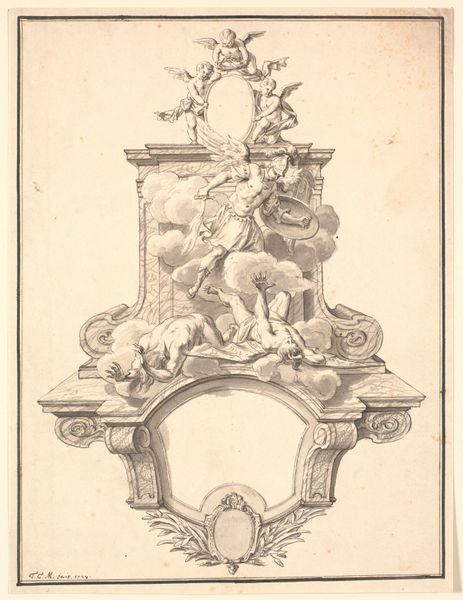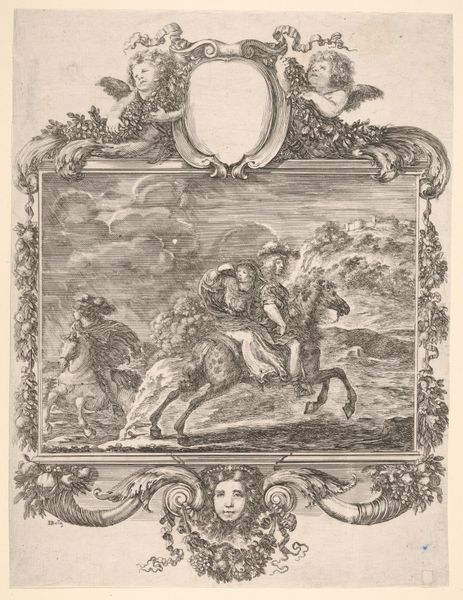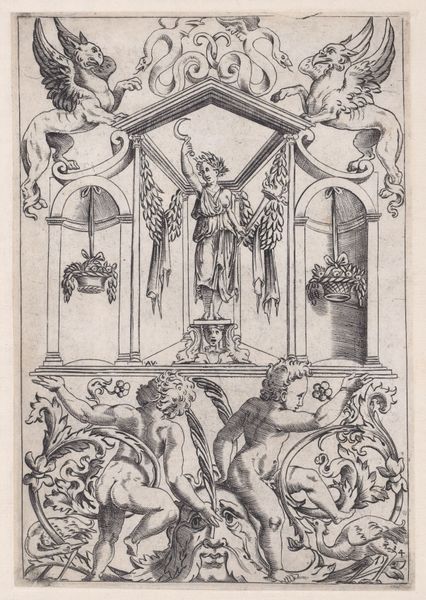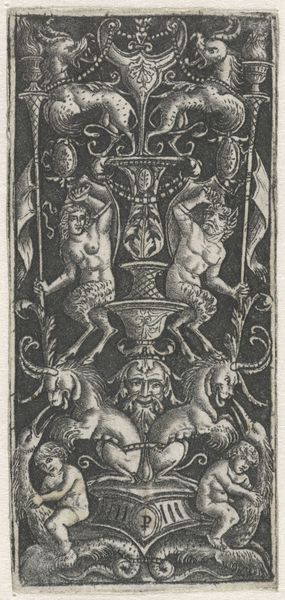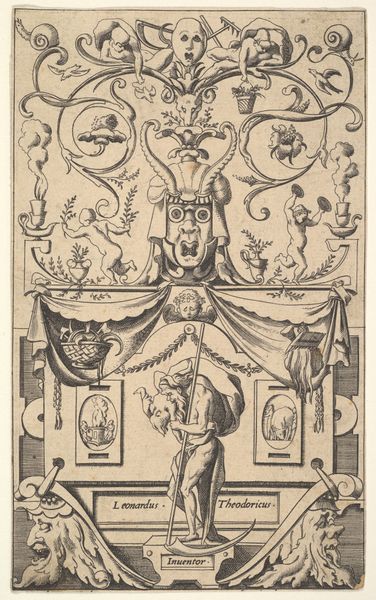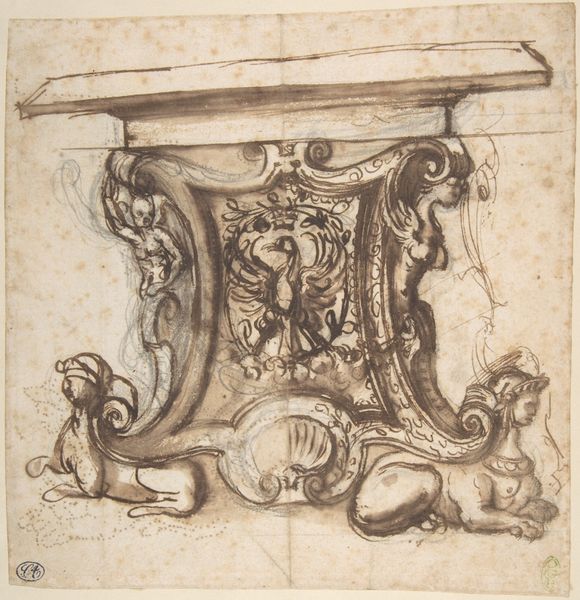
drawing, pencil
drawing
baroque
pencil
line
history-painting
Dimensions: 5 x 4 1/4 in. (12.7 x 10.8 cm)
Copyright: Public Domain
Editor: We're looking at Gilles-Marie Oppenord's "Study for a Cartouche," dating roughly from 1672 to 1742, a pencil drawing now housed at the Metropolitan Museum of Art. I'm struck by the sort of ferocious grandeur it evokes, and the fact that it's a study for something, rather than a finished piece. What historical perspectives illuminate this work for you? Curator: Considering this drawing from a historical perspective, it reflects the socio-political climate of its time. Cartouches like this weren't merely decorative; they were statements. Oppenord's piece, with its militaristic and aristocratic motifs—the dogs, the weaponry—speaks volumes about power and patronage in the late Baroque period. Think of these cartouches as visual branding for the elite. Where might we see it displayed? Editor: I imagine it'd adorn something quite grand - perhaps a royal building or some important governmental structure. How do we know who, precisely, it was "branding" for? Curator: It's difficult to say for sure *who* the finished cartouche would have celebrated, but the boar could be an emblem of the hunt, so it's possible it was created for someone keen on such activity. Consider how the museum shapes our view of this today. The act of display elevates what was once a preparatory sketch to the level of high art, altering its perceived value and purpose. Editor: That's fascinating – it makes you wonder how many other pieces initially intended for a purely functional purpose are now viewed solely for their aesthetic qualities, their functionality almost lost. Curator: Exactly. The very act of its preservation and presentation here shapes how we interpret not only the object itself, but also the values of the culture that produced it, even its reception centuries later. What do you make of the shift in understanding art from functional use to artistic appreciation? Editor: It makes me consider the role of art institutions in dictating the public understanding of art, and even overlooking the socio-historical context that shaped the work in the first place. It's given me a lot to reflect on!
Comments
No comments
Be the first to comment and join the conversation on the ultimate creative platform.
